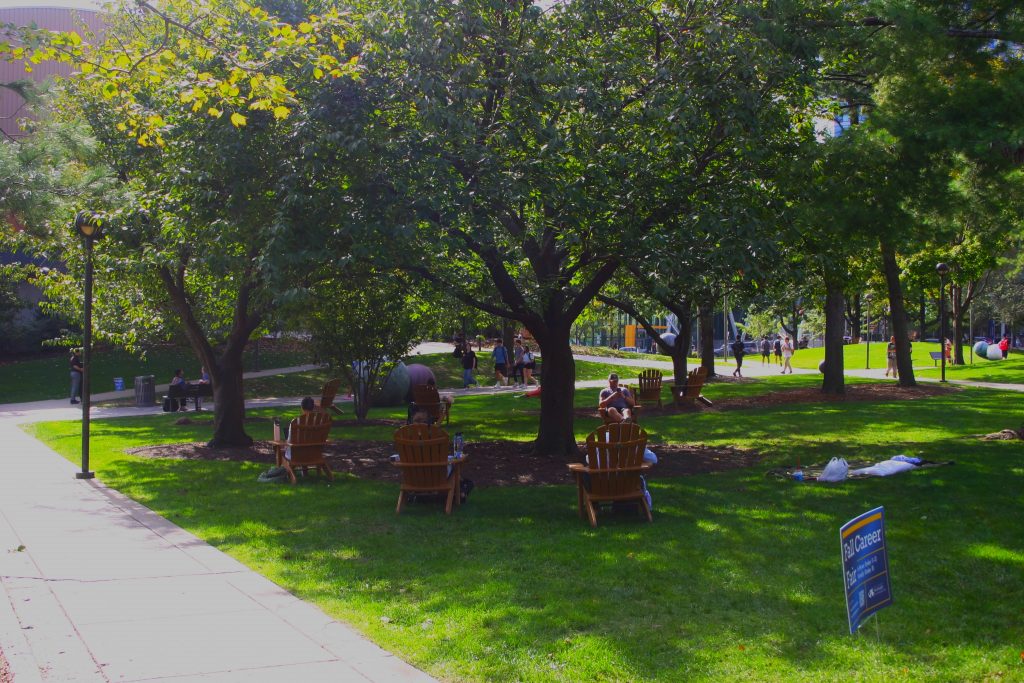
It is week four of the 2024 Fall term: if you squint through the green mesh tarp covering the metal chain link fences surrounding the property that used to be Myers Hall, you will see a lovely little park forming in the space where, not too long ago, a large mound of dirt sat. Not too long before that, it was the site of the Myers Hall demolition, which to most students living nearby, was just another development project on campus, with all of the noise and walkway obstruction that typically come with it.
This project is not another large building inaccessible to students, nor is it one that blocks views of the city skyline or the sidewalks alongside busy roads. The soon-to-be park on the Myers Hall lot is the perfect example of campus development with real benefits for everyone– students, community members and even native wildlife.
Due to its location being slightly away from the heart of campus, the anticipation and excitement around the completion of this project may not be felt by most students.ut it definitely should be. According to Drexel, the approximate 40,000 square feet of turf will be outfitted with “native plants, stormwater management and outdoor outlets on lamps and benches.” It also features LED lighting for reduced light pollution, horticultural soils designed to increase water infiltration to ease burdens on the city sewer system and a plaza with seating. Assuming it lives up to all it has promised, the new greenspace will be an incredible asset to students and residents of University City. The demolition of Myers Hall likely had fewer consequences than demolitions of its kind may have had, and such a project would typically be incredibly wasteful, the waste was reduced by donating the excess furniture from Myers to charities and student apartments.
This is what true student-focused, community-enhancing campus development looks like. These are the kinds of projects that inspire students to feel both proud of their school and as if their wellness is valued. It might just be another park, but the developers truly could have demolished Myers and laid turf down in the vacant space. Instead, a conscious decision was made to provide something that offers no benefit to the school other than enhancing the lives of students. While this should be an obvious motivation for a university to build a park, there has been an unprecedented construction boom on campus in recent years that affects the commutes, sleep schedules and patience of students. A development project such as this one with so few negative impacts is a desperately needed step in the right direction.


